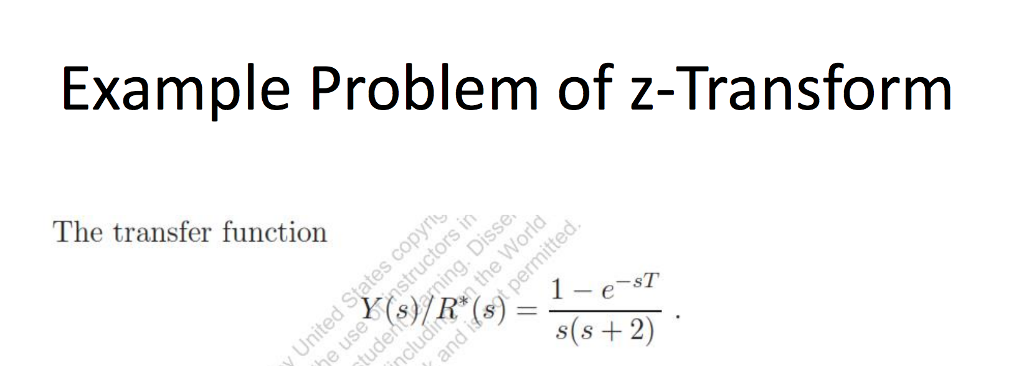


The Z-transform can be defined as either a one-sided or two-sided transform.
Z transform calculator series#
įrom a mathematical view the Z-transform can also be viewed as a Laurent series where one views the sequence of numbers under consideration as the (Laurent) expansion of an analytic function. The idea contained within the Z-transform is also known in mathematical literature as the method of generating functions which can be traced back as early as 1730 when it was introduced by de Moivre in conjunction with probability theory. to calculate z transform we can use any type of input equation or signal, vectors, arrays, multi-dimensional matrices are also allowed as input functions. The modified or advanced Z-transform was later developed and popularized by E. It was later dubbed "the z-transform" by Ragazzini and Zadeh in the sampled-data control group at Columbia University in 1952. It gives a tractable way to solve linear, constant-coefficient difference equations. Hurewicz and others as a way to treat sampled-data control systems used with radar. The basic idea now known as the Z-transform was known to Laplace, and it was re-introduced in 1947 by W. 9 Linear constant-coefficient difference equation.7 Relationship to Fourier series and Fourier transform.Such methods tend not to be accurate except in the vicinity of the complex unity, i.e. One of the means of designing digital filters is to take analog designs, subject them to a bilinear transform which maps them from the s-domain to the z-domain, and then produce the digital filter by inspection, manipulation, or numerical approximation. What is roughly the s-domain's left half-plane, is now the inside of the complex unit circle what is the z-domain's outside of the unit circle, roughly corresponds to the right half-plane of the s-domain. Whereas the continuous-time Fourier transform is evaluated on the Laplace s-domain's imaginary line, the discrete-time Fourier transform is evaluated over the unit circle of the z-domain. This similarity is explored in the theory of time-scale calculus. It can be considered as a discrete-time equivalent of the Laplace transform (s-domain). In mathematics and signal processing, the Z-transform converts a discrete-time signal, which is a sequence of real or complex numbers, into a complex frequency-domain ( z-domain or z-plane) representation. For Fisher z-transformation in statistics, see Fisher transformation. For standard z-score in statistics, see Standard score.


 0 kommentar(er)
0 kommentar(er)
